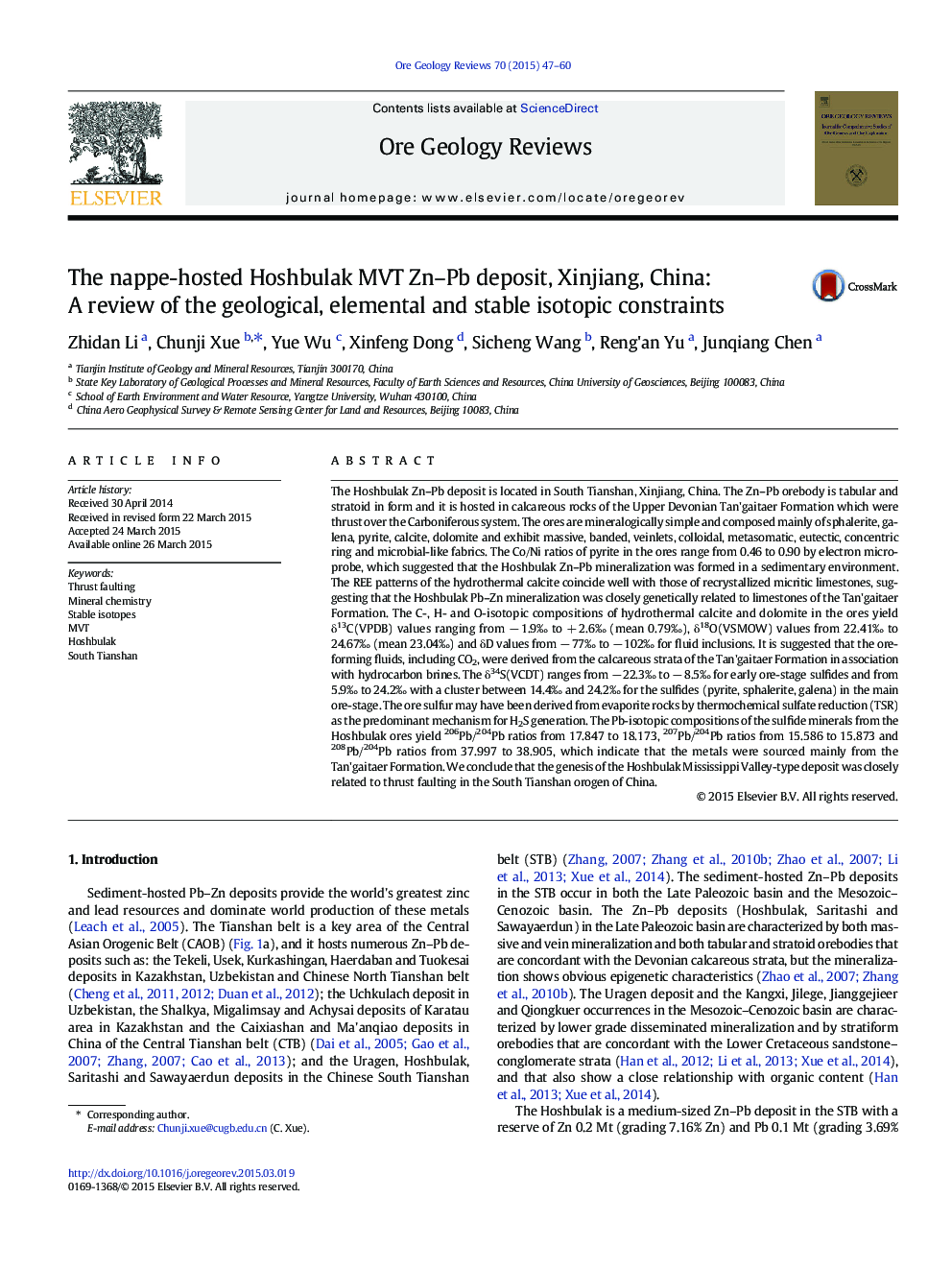| کد مقاله | کد نشریه | سال انتشار | مقاله انگلیسی | نسخه تمام متن |
|---|---|---|---|---|
| 4696967 | 1637234 | 2015 | 14 صفحه PDF | دانلود رایگان |

• A detailed ore geology and geochemistry of the Hoshbulak Zn–Pb deposit was been presented.
• The Hoshbulak may be the first recognized MVT Zn–Pb deposit in Chinese Tianshan.
• The Hoshbulak deposit was closely related to the thrust compression driving fluid flow during Late Permian orogeny.
The Hoshbulak Zn–Pb deposit is located in South Tianshan, Xinjiang, China. The Zn–Pb orebody is tabular and stratoid in form and it is hosted in calcareous rocks of the Upper Devonian Tan'gaitaer Formation which were thrust over the Carboniferous system. The ores are mineralogically simple and composed mainly of sphalerite, galena, pyrite, calcite, dolomite and exhibit massive, banded, veinlets, colloidal, metasomatic, eutectic, concentric ring and microbial-like fabrics. The Co/Ni ratios of pyrite in the ores range from 0.46 to 0.90 by electron microprobe, which suggested that the Hoshbulak Zn–Pb mineralization was formed in a sedimentary environment. The REE patterns of the hydrothermal calcite coincide well with those of recrystallized micritic limestones, suggesting that the Hoshbulak Pb–Zn mineralization was closely genetically related to limestones of the Tan'gaitaer Formation. The C-, H- and O-isotopic compositions of hydrothermal calcite and dolomite in the ores yield δ13C(VPDB) values ranging from − 1.9‰ to + 2.6‰ (mean 0.79‰), δ18O(VSMOW) values from 22.41‰ to 24.67‰ (mean 23.04‰) and δD values from − 77‰ to − 102‰ for fluid inclusions. It is suggested that the ore-forming fluids, including CO2, were derived from the calcareous strata of the Tan'gaitaer Formation in association with hydrocarbon brines. The δ34S(VCDT) ranges from − 22.3‰ to − 8.5‰ for early ore-stage sulfides and from 5.9‰ to 24.2‰ with a cluster between 14.4‰ and 24.2‰ for the sulfides (pyrite, sphalerite, galena) in the main ore-stage. The ore sulfur may have been derived from evaporite rocks by thermochemical sulfate reduction (TSR) as the predominant mechanism for H2S generation. The Pb-isotopic compositions of the sulfide minerals from the Hoshbulak ores yield 206Pb/204Pb ratios from 17.847 to 18.173, 207Pb/204Pb ratios from 15.586 to 15.873 and 208Pb/204Pb ratios from 37.997 to 38.905, which indicate that the metals were sourced mainly from the Tan'gaitaer Formation. We conclude that the genesis of the Hoshbulak Mississippi Valley-type deposit was closely related to thrust faulting in the South Tianshan orogen of China.
Journal: Ore Geology Reviews - Volume 70, October 2015, Pages 47–60